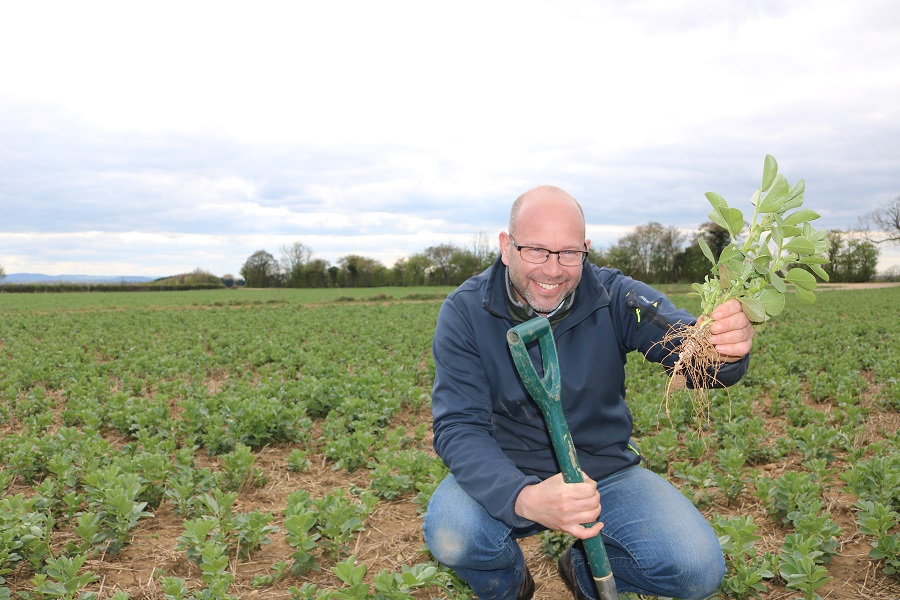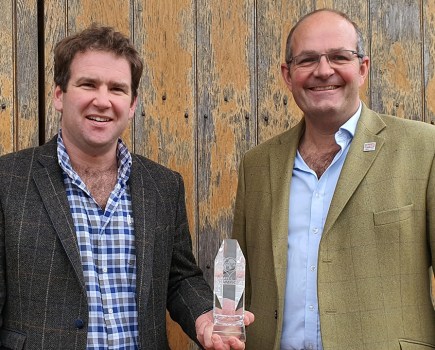The thriving soils of a Worcestershire estate are carefully managed to maximise carbon capture while there’s a sharing culture that resonates the benefits. CPM visits to understand the quest that’s driven the improvements.
Mother Nature has a marvellous way of feeding our crops that we’re only just beginning to appreciate.
By Tom Allen-Stevens
There’s an addition to Jake Freestone’s Cross Slot drill that sits among the main farm buildings of Overbury Enterprises in Worcestershire. On the John Deere 8370R that pulls the drill sits a TT front-mounted tank.
“We’re putting biology directly in with the seed,” explains Jake. “Direct-drilled crops always benefit from a little starter nutrition, but we’re moving away from DAP and TSP that can get locked up in our calcareous soils.”
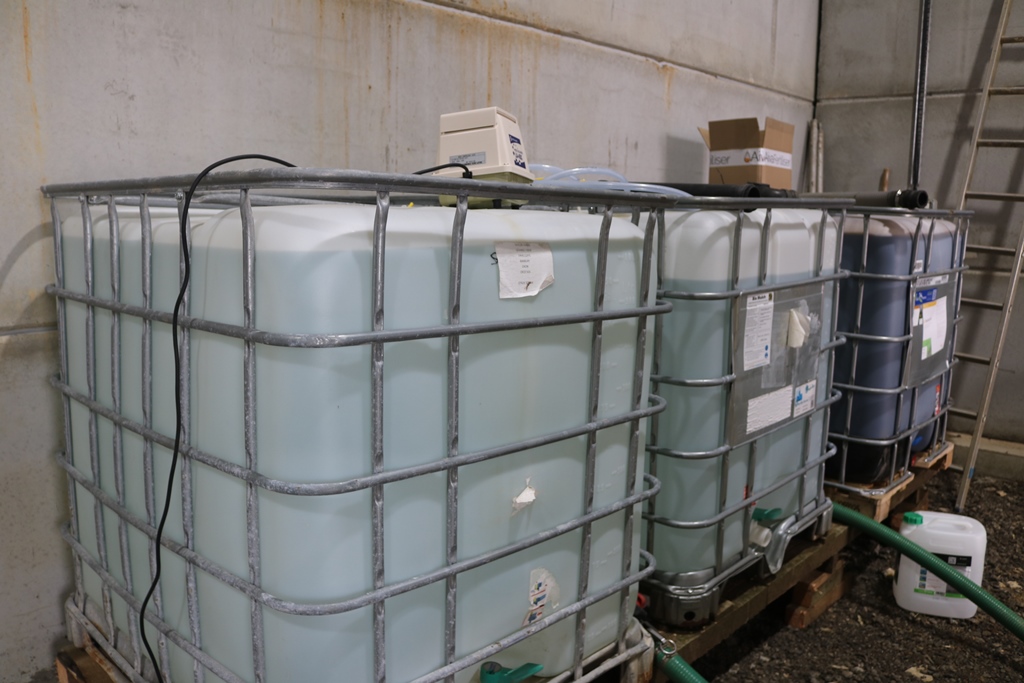
The “gloopy” biological mixture is pumped from the front-mounted tank directly to the cross-shaped seed coulters on the drill.
Jake points to a manifold on the front of the drill that distributes the mixture, taken from the front tank through a peristaltic pump. This is needed to pass the brew of phosphites, microbes and other carefully selected ingredients, no matter how “gloopy” the resulting mixture, down narrow tubes into the individual slots created by the cross-shaped coulters.
“We’ve worked hard to develop the soil biology for many years, and previously sprayed a brew to encourage this. But it makes far more sense to put this in with the seed so the beneficial microbes grow and develop with the crop. We’re finding we can make a saving on seed dressings.”
This is just the icing on the cake, however – the ambition is to encourage a biology that allows the farm to reduce its reliance on a whole raft of synthetic inputs, with nitrogen firmly in the sights as a priority. A leading pioneer in regenerative agriculture, Jake has conducted many years of on-farm trials into cover and companion crops, establishment and nutrition practices. It’s a dogged pursuit to build the life of the 950ha of mainly Cotswold brash, along with heavy alluvial clay soils of the stunning estate he manages that rises to 300m on the Bredon Hill Nature Reserve overlooking Tewkesbury.
And he’s achieved this in spades – soil organic matter (SOM) levels have been closely monitored and have risen on average by 1.7% since 2014. Now Jake’s focused on nitrogen fertiliser use efficiency (NfUE). “Since we started using the Farm Carbon Toolkit in 2019 we’ve realised the massive contribution nitrogen fertiliser makes to emissions – around 54%.”
The farm is part of the Kellogg’s Origins programme that partners a group of growers with suppliers, scientists and NGOs to increase productivity and improve environmental outcomes. The group’s been looking to improve its NfUE, and Jake brandishes a sheet displaying some impressive results. Some of his fields are achieving up to 82% for his fields, compared with a national average of below 60%.
“We take regular leaf tissue samples and monitor nutrient levels in the crop closely, only applying as and when the crop needs it,” he explains. “But the key to the system is the biological activity in the soil. Increase that and you increase the naturally available N – Mother Nature has a marvellous way of feeding our crops that we’re only just beginning to appreciate.”
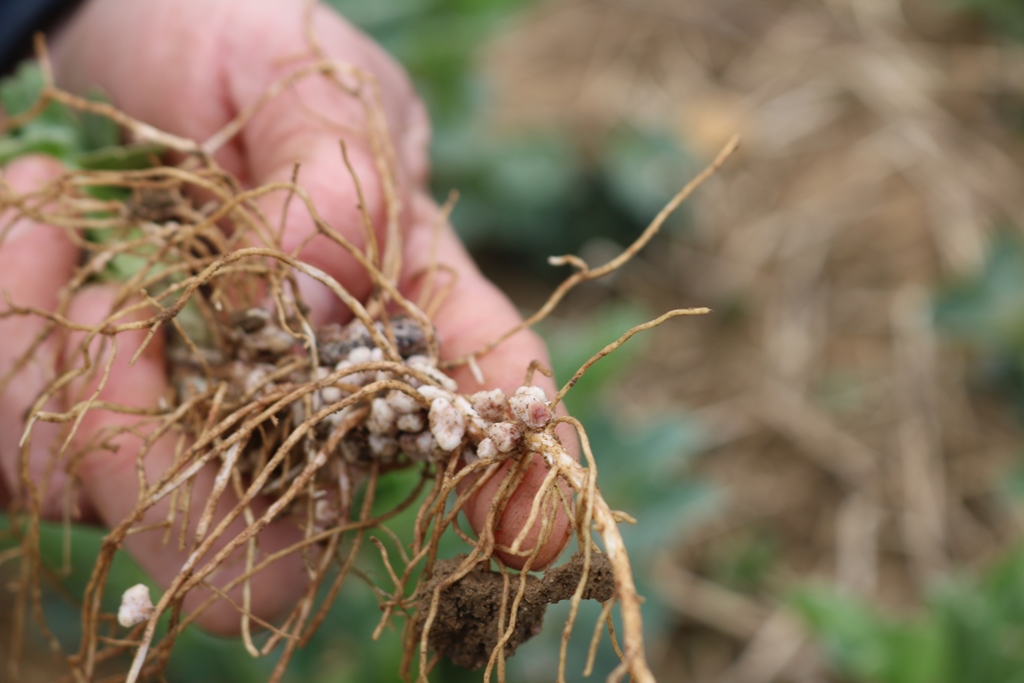
It’s not just the number of nodules but the colour – if you cut them open there’s a pink heart which shows they’re working hard for you.
Plants use microbes to get the micronutrients they need, he reasons. “If there’s less life in the soil, they have to work harder to get these, which saps energy. So a healthy soil leads to a far more energetic crop.”
Jake’s determined to measure that too – he pulls out a soil microbe test kit that links to an app on his smartphone. “It measures the overall balance of active carbon and the proportion of fungi to bacteria. What I’m looking for is a fungally dominated soil and you can only achieve that by leaving it alone.”
Since Jake arrived at Overbury in 2003, he’s moved the farm gradually down the minimum-tillage path, going fully no-till in 2015 with the purchase of the 6m Cross Slot drill. As well as the cost savings this has brought, he believes it’s an integral part of raising the SOM as well as the life in the soils. “We’re aiming for a resilient system that brings a consistent 9t/ha wheat crop, rather than one that’ll deliver 10.5t/ha one year and 7t/ha the next,” he comments.
So how he is faring? Mike Green, UK sustainability manager with BASF, has arrived on the farm with a soil corer that takes samples in 15cm sections through the soil profile. “Jake’s always been interested in what lies beneath the surface. This tool gives you an idea of bulk density, but more importantly you can see how the roots and structure of the soil have developed at depth,” he explains.
“Capturing carbon in your soils isn’t about locking it away – it’s active carbon we’re after. The aim, especially in no-till situations, is to have the right growing conditions above ground that ensure a vibrant soil life below to cycle the carbon. You can see from the roots and worms you find at depth in Jake’s soils that he’s achieving this.”
Moving to a field of beans on the estate, Jake takes his fork and digs up a couple of plants. As the soil and worms fall away from the roots, this exposes a throng of nodules capturing nitrogen into the soil. “I think it may have been the clover in the cover crop that kick-started the nodules – we wouldn’t get this many if we weren’t doing something right for the soil biology,” he says. “It’s not just the number but the colour – if you cut them open there’s a pink heart which shows they’re working hard for you.”
A multitude of middens pock-mark the surface of the field, indicative of the worm activity below. Mike takes a penetrometer and sinks it through the soil profile, confirming the good physical structure. “All our straw is chopped, apart from a small amount on a straw-for-muck deal,” notes Jake. “But these days we struggle to put enough straw on the surface to keep the worms happy.”
Poultry litter forms another addition, but it’s living plant material that feeds the majority of the carbon cycle. Years of methodical cover crop trials have brought Jake a clear picture on the mixes that produce results across the estate’s soils and crop rotation.
“Typically we’ll grow a six to eight-way mix, looking for a good balance of carbon-rich and leafy crops, and you need a legume in there, unless it’s in the following cash crop. So a leguminous cover crop may contain berseem clover, vetch, crimson clover, while a non-leguminous one will have linseed, phacelia, buckwheat and radish,” Jake explains.
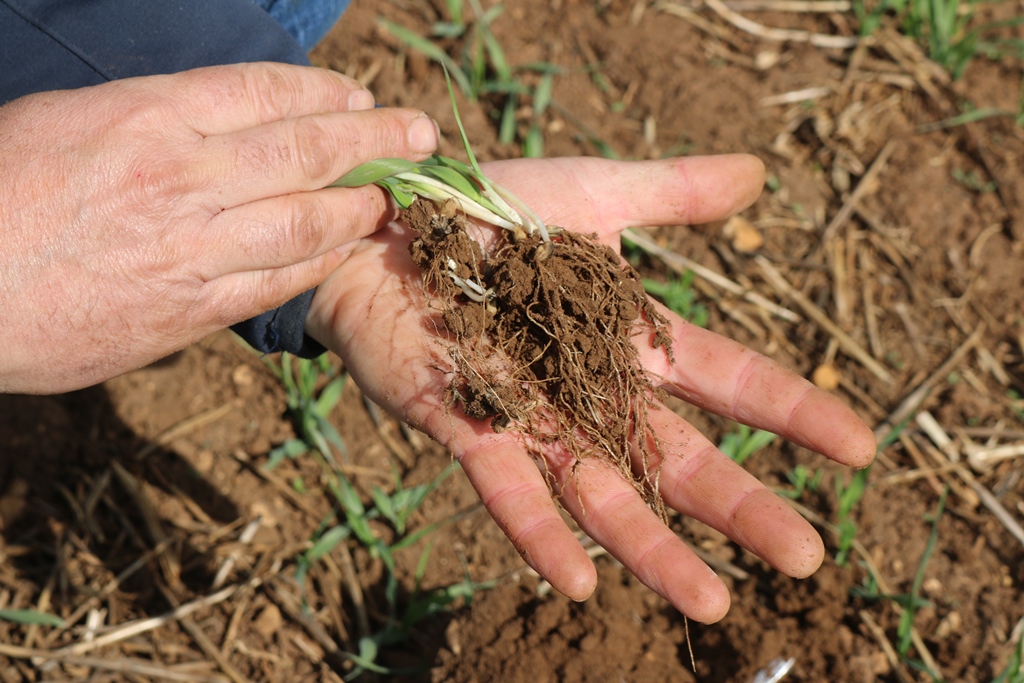
This barley has received no soil-applied artificial N and reduced chemicals and is being compared with a neighbouring, conventionally treated crop.
“The cereal content will depend on the following crop, although I don’t worry too much about a cereal following a cereal. Rye or oats with vetch form a fabulous mix for sheep, delivering the same metabolisable energy (ME) content as a high-protein feeding cake.”
The 1100 ewes of the Overbury flock form an integral part of the living carbon cycle. These graze, 400 at a time, across 4-5ha blocks. “Grazing is important if you can do it right. Sheep act as mobile muck spreaders so you can cut back on nutrients. The bugs from their gut also helps the straw break down,” says Jake.
“We get few surface compaction issues, but it’s crucial not to overgraze – leave the surface bare and you lose carbon. Those cover crops that aren’t grazed are left as long as we can before destroying the green cover on light soils. On heavier land it makes sense to destroy the cover earlier to allow the soil to dry out, although it’s a compromise. This is also where we still very much rely on glyphosate, which may potentially be an Achilles heel,” he notes.
The tour of the estate takes in a field of Voltage oilseed rape, grown with a companion crop of vetch, berseem clover, buckwheat and phacelia. “Brassica crops halt the development of arbuscular mycorrhizal fungi, and the companion crop provide a bridge to keep the cycle going,” he explains.
Then the last stop on the tour, just below Bredon Hill, is a block of spring barley getting underway following a winter of grazed cover crops. Jake and Mike take a close look at the young plants that have already put out an impressive root system. The two fields of RGT Planet, established side by side at the beginning of March, each have a very different nutrient programme, Jake explains.
“One will receive its full total balance of 110kgN/ha under a conventional regime. On the other we’re applying no soil-applied artificial N and reduced chemicals. It received a biological brew with the seed which should help the crop draw in P from soil reserves and N from the atmosphere. I’m hoping this will also make it more resilient to disease – it’s thought ammonium nitrate pulls water into the crop which can make it more susceptible to infection.”
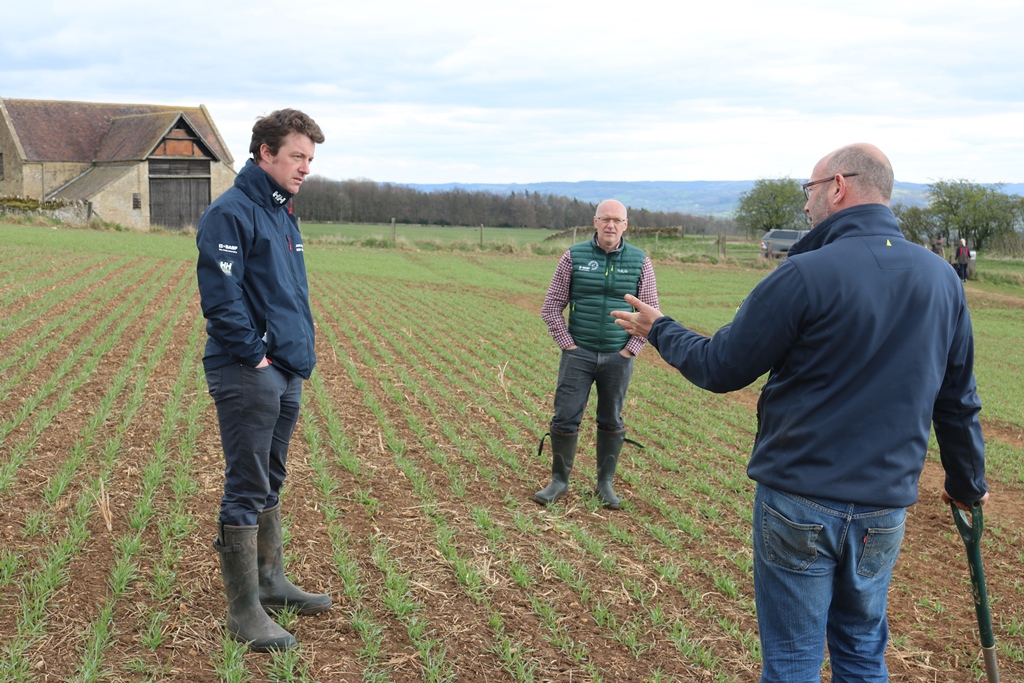
On-farm trials, and communicating the results to other farmers form an integral part of the estate’s work.
On-farm trials, and communicating the results, form an integral part of the estate’s work – A LEAF demonstration farm, it hosts numerous visits by other farmers. “I’m interested and I want good profitable crops grown in harmony with the environment. We’re also being challenged to use fewer chemical inputs, and I want to know the solutions to what will replace them before they’re removed. Translate that into cost savings and it’ll help compensate for the loss of BPS,” says Jake.
“But it’s a challenge all farmers face, and I find I gain so much from sharing what we’re doing here in terms of the knowledge and experience you get back.”
It’s knowledge that’s shared not just with farmers – the farm hosts school visits as well as taking part in LEAF’s Open Farm Sunday. A Facebook page is an integral part of engaging with the local community and explaining farming practices across an estate that has 42km of footpaths and bridleways.
A keen user of Twitter and You Tube, Jake also has a regular Facetime a Farmer session with a Lincolnshire primary school. “I enjoy talking farming with young children as well as the grown-up conversations as you get to see how it’s perceived from a different perspective. It’s also very much encouraged by the Bossom family who own the estate – it’s been in the same hands for 300 years, and they’re keen to see that what we do today will ensure it’s still thriving 300 years into the future,” notes Jake.
What makes Jake Freestone a Climate Change Champion?
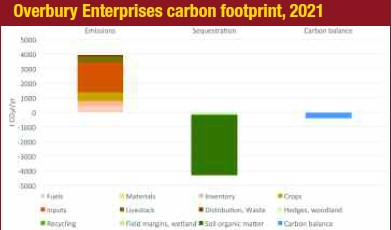
Source: Overbury Estate, 2021, calculated using Farm Carbon Calculator. Figures shown are indicative.
Innovative ideas
The management of the estate’s soils is geared towards ensuring there’s a thriving biology driving the active carbon cycle responsible for sequestering an impressive carbon balance. Jake refines and improves his system through on-farm trials and sharing ideas with others.
Productivity push
Close nutrient monitoring means nitrogen fertiliser is used at up to 82% efficiency. With the soil’s microbial community continually improving, bolstered through careful additions, productivity is consistently maintained with a reducing balance of synthetic inputs.
Cultivation care
Direct drilling across the arable area, in conjunction with other soil improvement measures, has led to a rise in soil organic matter of 1.7% on average over seven years. Sensitively grazed, the management provides an excellent foundation for the microbial community it supports.
Bio-based boldness
Through good use of cover crops, tailored to the estate’s environment, green cover is maintained all year round and maximised across the arable area, providing natural solar panels to optimise carbon capture opportunities.
A thriving community holds the key to capturing carbon
As UK Farming moves towards Net Zero emissions, while it’s important to recognise the climate impact of growing crops, this can be far outweighed by the benefits of a crop grown to its maximum climate efficiency, notes BASF UK sustainability manager Mike Green.
“Farmers are uniquely placed to capture vast quantities of carbon dioxide through the crops they grow. There’s a climate benefit for all of this stored carbon, and while some of it is passed on to the consumer as grain, how the crop is grown directly relates to the maximum total carbon captured,” he says.
“For crops in the arable rotation, that comes down to maximising green leaf area and keeping those natural solar panels clean so they photosynthesise at optimum efficiency.
“But you cannot achieve maximum growth above ground unless there is a thriving soil community below to support it. This also drives the active carbon cycle responsible for storing the vast majority of carbon in productive arable soils.
“Jake has developed at Overbury a farming system which, from the ground up, takes every opportunity to build this thriving community and takes care to ensure it remains in balance. He marries expert knowledge with co-creation, gleaned from the community of progressive growers with whom he shares experience – he is a great advocate for progressive farming, with a real and true sense of fairness and honesty.
“We’re keen to support his quest to understand the natural pathways to improving his farming system, which is why BASF is pleased to support his nomination as Climate Change Champion 2021.”
Climate Change Champions
UK Farming has set itself the challenging target of Net Zero emissions by 2040. Although led by the NFU, it will take the entire industry, working together in a partnership approach to meet this ambitious goal.

